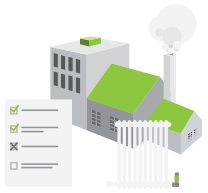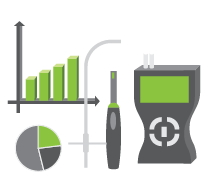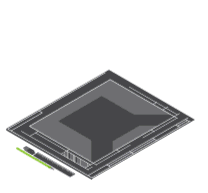
MEASUREMENT OF HVAC SYSTEMS
The measurement of the building and the building engineering systems is justified in many cases. In the building we can measure temperature up to 30 locations parallel, which gives an accurate picture of the temperature conditions inside the building. It is possible to measure continuously for several weeks with the data loggers, which can be used to analyze the building’s operation during daytime, night time and weekend. The necessary interventions can be carried out based on the measurement, which results in energy savings and thermal comfort improvement.
Our experience that the measurement of the building is useful in the following cases:
- In some parts of the building the temperature is too low, while in other parts the temperature is too high (overheating)
- Generally high or low indoor temperatures in the building
- In other complex cases where measurements may indicate the malfunctioning component
Measurements can be made in three fields:
- 1.Measurement of indoor air
- 2.Measurement and balancing of the ventilation system
- 3.Measurement and balancing of the heating and the cooling systems
Please contact us to make the measurements.
1. Indoor air quality
The indoor air quality is very important from comfort and energy point of view. We can measure temperature, relative humidity and CO2 concentration with manual instruments or data loggers. The sampling frequency can be selected freely (e.g. 1 to 15 minutes). Measurements can be made both inside the premises and in the ventilation systems (air handling unit, air duct, endpoints). By evaluating the measured data, we can gain useful information about air characteristics in the rooms, as well as the operational characteristics of the HVAC systems. Based on the measurement results we propose energy saving and comfort improving interventions.
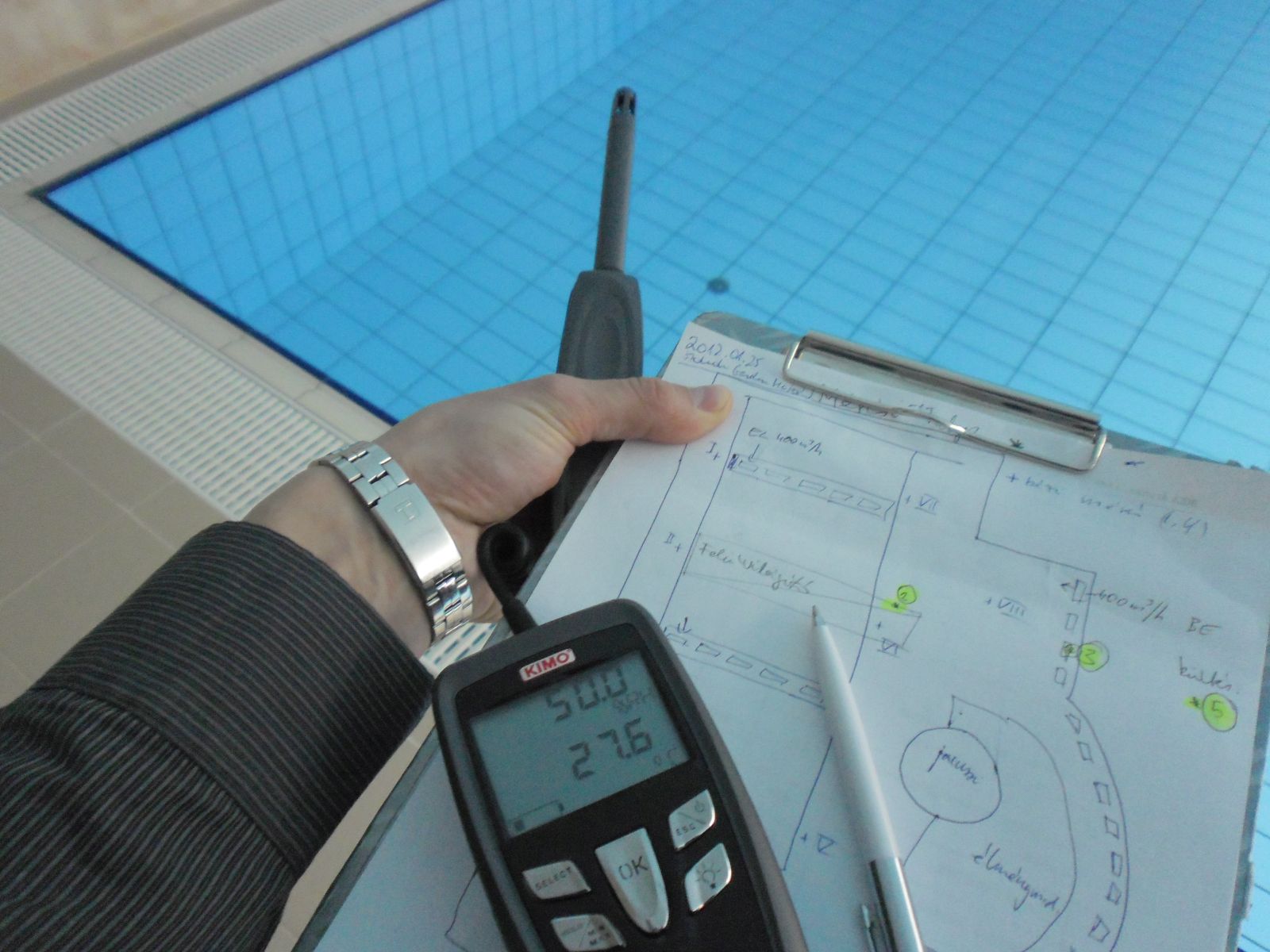
2. Ventilations systems
The air flow in the ventilation system has great importance from both comfort and energy point of view. In the occupancy zone, the air velocity plays an outstanding role in the sense of comfort. We can measure air velocity and air flow within the air ducts and at the end points, as well as air velocity in the occupancy zone. The measured air flow can be compared to the planned values so we can find out whether the system's balancing is adequate. The ventilation system can be evaluated in terms of air flow and comfort.
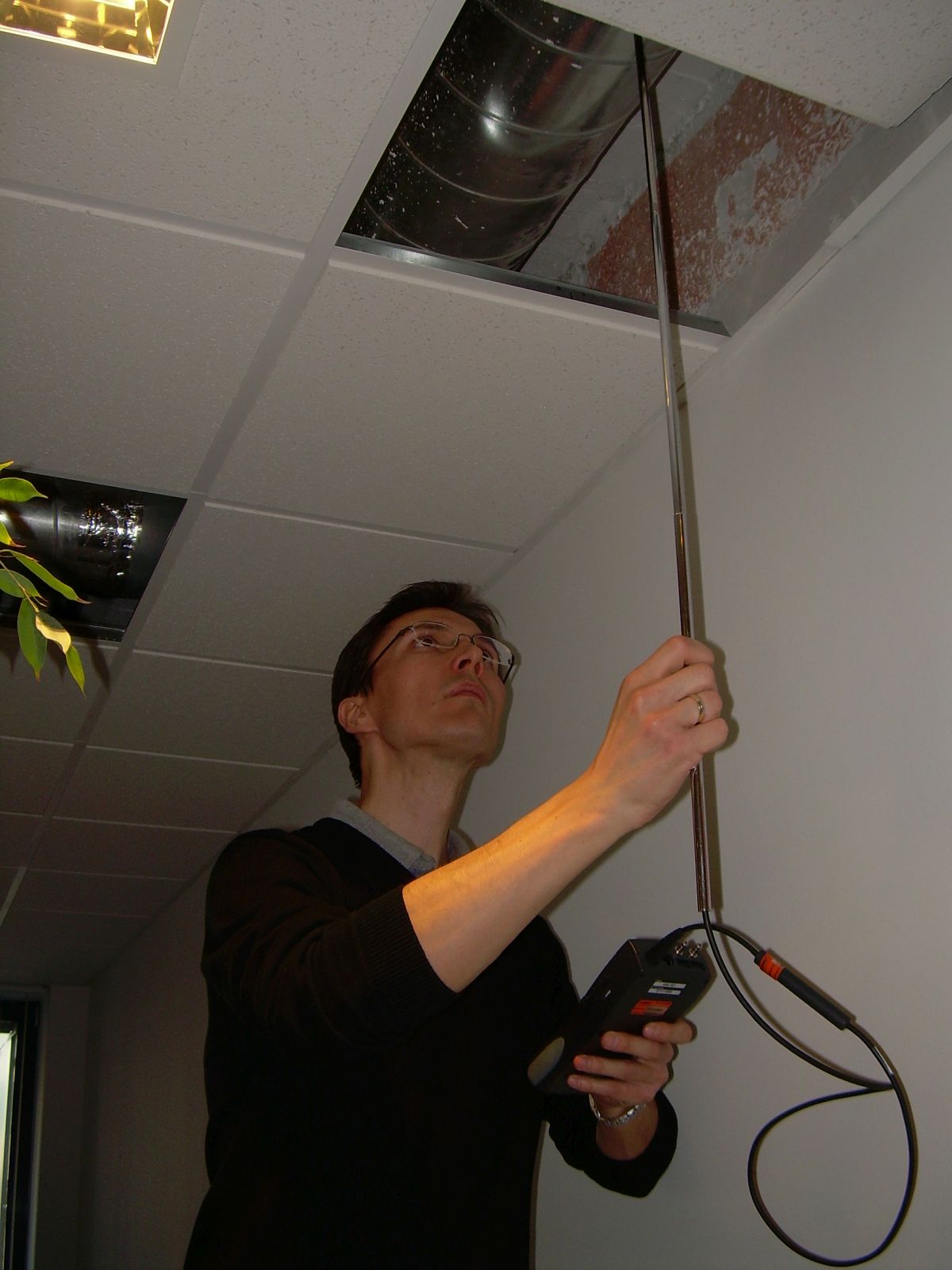
3. Heating and cooling systems
We have instruments for measuring flow and surface temperature in the heating and cooling systems.
By measuring the heating and cooling water flow, we can find out whether the hydronic balancing of the system is appropriate. The aim of the hydronic balancing is to adjust the pressure difference (resistance) on the balancing valves which results in the planned flow rate at each valve. During the balancing, in order to ensure economical operation, it is necessary to minimize the pressure difference on the valves and to ensure the optimal working point of the pump. The over- and under-heating or over- and under-cooling can be avoided by the balancing, which improves thermal comfort.
Measuring the temperature (e.g. forward and return water temperature) can be made with manual instruments or even by data loggers capable of recording data over several weeks. The sampling frequency can be selected freely. By evaluating the data, we get useful information on the operational characteristics of the heating and cooling systems, based on which we propose energy and comfort measures.
Instruments for measuring air quality:
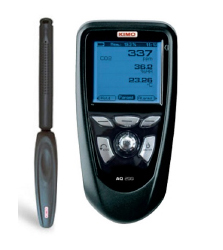
KIMO AQ 200
Temperature, relative humidity and CO2 concentration meter
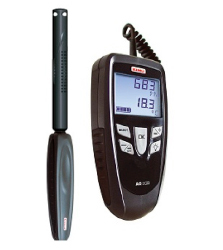
KIMO AQ 100
Temperature and relative humidity meter
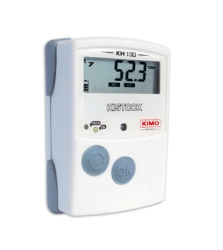
KIMO air temperature collectors
A programmable device for continuous data collection. Typically, the temperature and relative humidity are recorded in every 10 minutes, for several weeks, and the measurement data is evaluated using the software of the data loggers.
Instruments for measuring and balancing air flow in the ventilation system:

KIMO DBM 700
Flowmeter for measuring ceiling diffusers and grids’ supply or extracting air flow and temperature.

KIMO VT 200
Thermo-anemometer for measuring air velocity/flow/temperature
Accessories:
KIMO K75 300*300 mm
KIMO K120 450*450 mm
KIMO K150 550*100 mm airflow cone
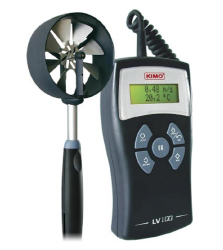
KIMO LV 110
Air velocity/flow/temperature meter with a vane probe and KIMO K25 200*200 mm airflow cone to measure diffusers.
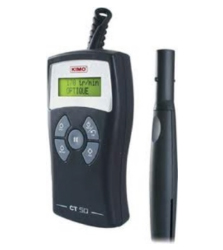
KIMO CT 50
Tachometer with optical probe to measure RPM.

SMA M 266
Digital multimeter to measure electrical power.
Instruments for measuring and balancing heating and cooling systems:
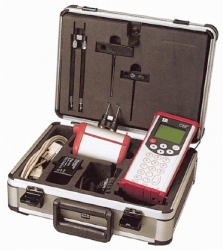
TA CBI II
Balancing instrument that measures differential pressure, flow, and temperature.

KIMO surface temperature sensor
We have accessories for our dataloggers that measure surface temperature. It is possible to measure and record continuously, for example, the surface temperature of the supply and return pipes in the heating system, which can be used to evaluate the operation of the heating system.



CONTACT
2310 Szigetszentmiklós, Deák Ferenc str. 2. fszt. 3.
TELEPHONE+36 30 964 2500



